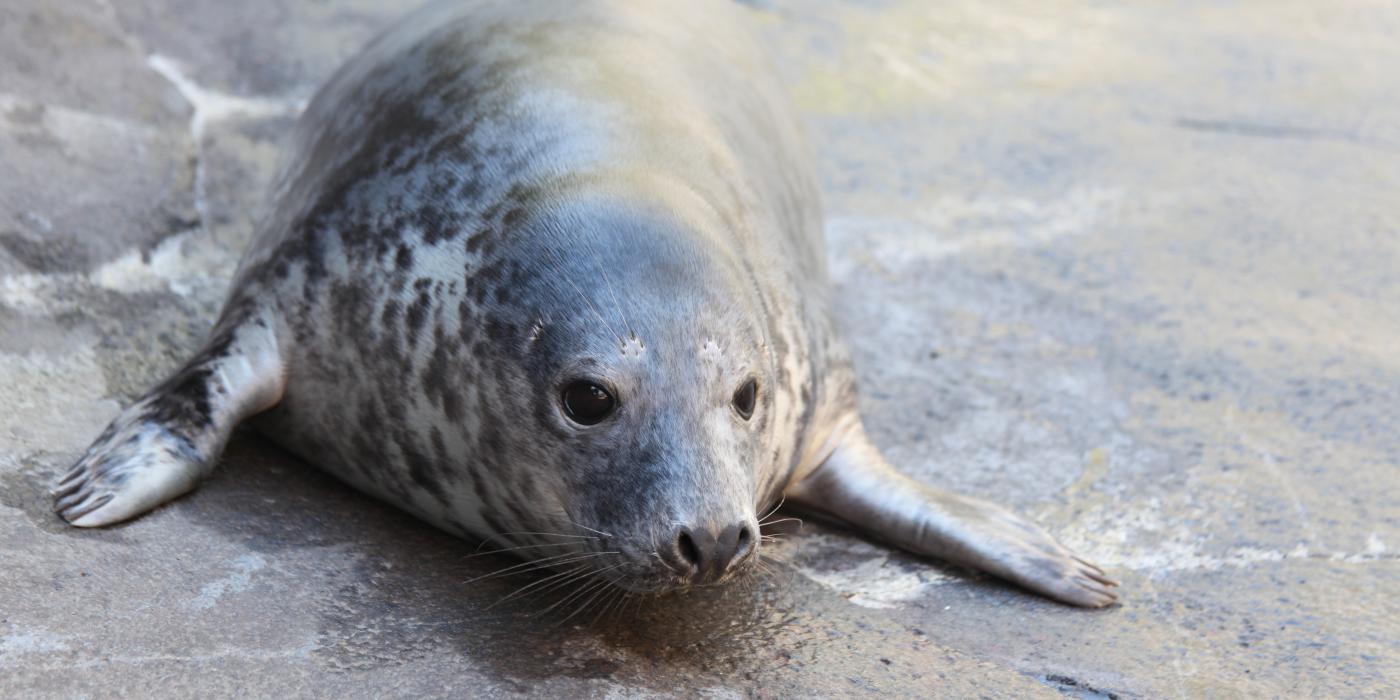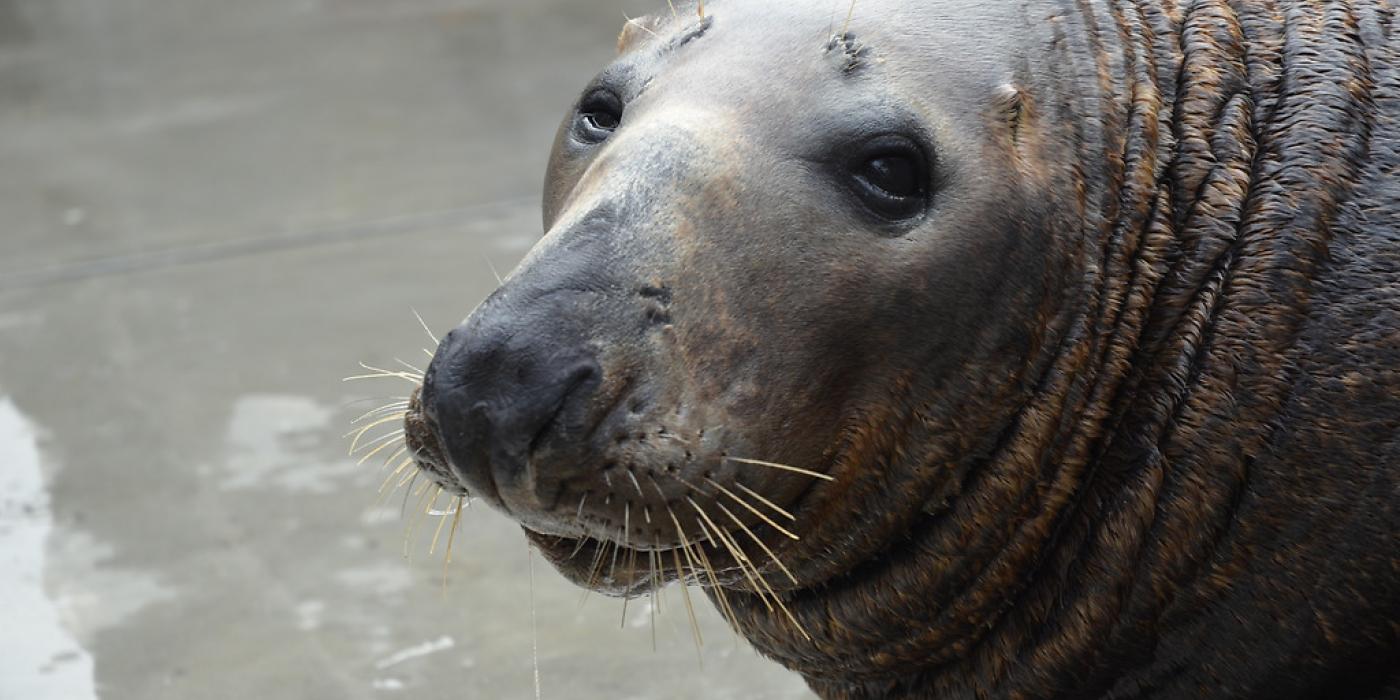A PUPdate on Sea Lion Catalina and Gray Seal Birdie
The youngest members of American Trail’s pinniped family have made quite the splash this summer. In June, sea lion Catalina celebrated her first birthday; meanwhile, 7-month-old gray seal Birdie is mastering some important training behaviors. Get the latest scoop on them from keeper Jackie Spicer.
What are Catalina and Birdie’s personalities like?
Catalina is very inquisitive and likes to investigate her exhibit and enrichment items, and she especially likes to interact with our other sea lions including her mother, Calli and father, Jetty, as well as our other adult females, Summer and Sidney, who are not related to her. Sometimes, she can be a bit too playful for the adults. She likes to be in the middle of everything and will often climb on top of them when they’re sunbathing. If she’s being a little too pesky, they will bark at her and let her know—but she often barks back and holds her own. They have found their place with each other.
Birdie, on the other hand, likes to have her own space. She’s a bit more timid, especially around her father, Gunther, because he’s such a big guy.
What are their favorite enrichment toys?
Both Catalina and Birdie have taken a real interest in the hoses that we use to clean their habitats, but in different ways. While keepers are cleaning the seal exhibit, Birdie will approach and play with the hose itself. Because we don’t want her to damage our hoses, we’ve taken a few old hoses that no longer work, cut them into varying sizes, and wrapped them into different shapes that she can play with and try to untie. That way, we can clean her habitat, but she can still play with the hose and have fun.
Catalina is more interested in the water coming out of the hose. At the end of our daily cleaning, we will spend a couple extra minutes letting her chase the water in the pool. She enjoys following the jet spray and trying to catch a few water droplets in her mouth. In addition to water enrichment, we will often give her small enrichment items—like boomer balls and Frisbees—that she can chase and push around with her nose and mouth in the water.
Have keepers started training Catalina and Birdie?
As soon as Catalina and Birdie started eating fish, we began to teach them husbandry behaviors that help us provide them with the best care. One of the first behaviors that they learn is the cue to “target.” In this session, keepers ask the animals to move towards a buoy and touch their nose to it. When they do so, they are rewarded with part of their normal diet—herring, mackerel, capelin, butterfish and squid. Like with all positive reinforcement training, it is Catalina and Birdie’s choice whether to participate or walk away, and there are no negative consequences for not participating.
So far, they have mastered following the target onto the scale so we can obtain weekly weights, as well as stationing (holding still) on a Frisbee so keepers can get a good look at their bodies for any cuts, scrapes or other issues that Zoo veterinarians might need to address. When Catalina observed us doing these training sessions with the adults, she would snatch the Frisbees! The adults would obviously get distracted by her play behavior, so now when the adult training sessions start we shift her to a nearby holding pool so she doesn’t steal the training tools.
Along with target training and stationing behaviors, Birdie has learned how to vocalize on cue, which is an important skill that helps us detect if they have an obstruction in their airway. Recently, we began teaching her to present her flippers, which enables us to examine her nails to ensure that they are wearing down properly and looking for any cracks or breaks.
We’re also in the early stages of training medical behaviors with Birdie. This includes opening her mouth on cue so we can examine her teeth and tactile training, which acclimates her to being touched for blood draws, injections and other medical exams that she may need in future. Those behaviors require a lot of trust between animal and keeper, so we are working on forming that relationship with her. Every now and then, we add in some fun behaviors, such as spinning around in a circle or waving, just to give her something easy to learn.
When are Catalina and Birdie on exhibit?
Keepers do a pinniped training and feeding demonstration every day at 11:15 a.m. (check out daily programs for more information). The animals have 24-hour access to their exhibits, so there’s a good chance visitors will be able to see sea lions and seals no matter when they visit.
This story appears in the September 2017 issue of National Zoo News. Enrichment and training allows animals to demonstrate their species-typical behavior, gives them opportunity to exercise control or choice over their environment and enhances their well-being. Learn more about the Zoo’s Animal Enrichment and Training Program.



